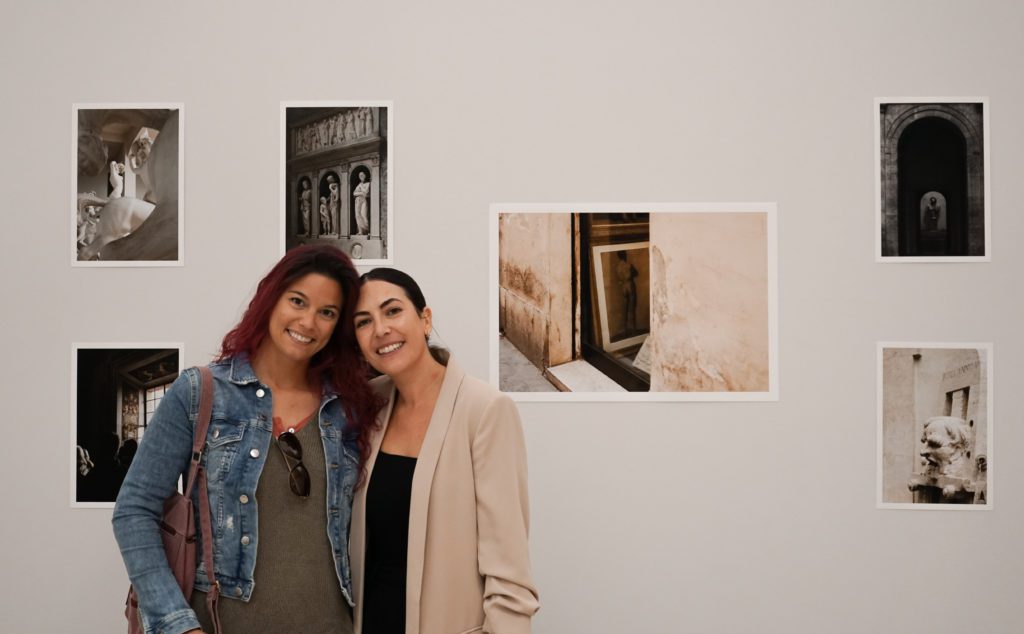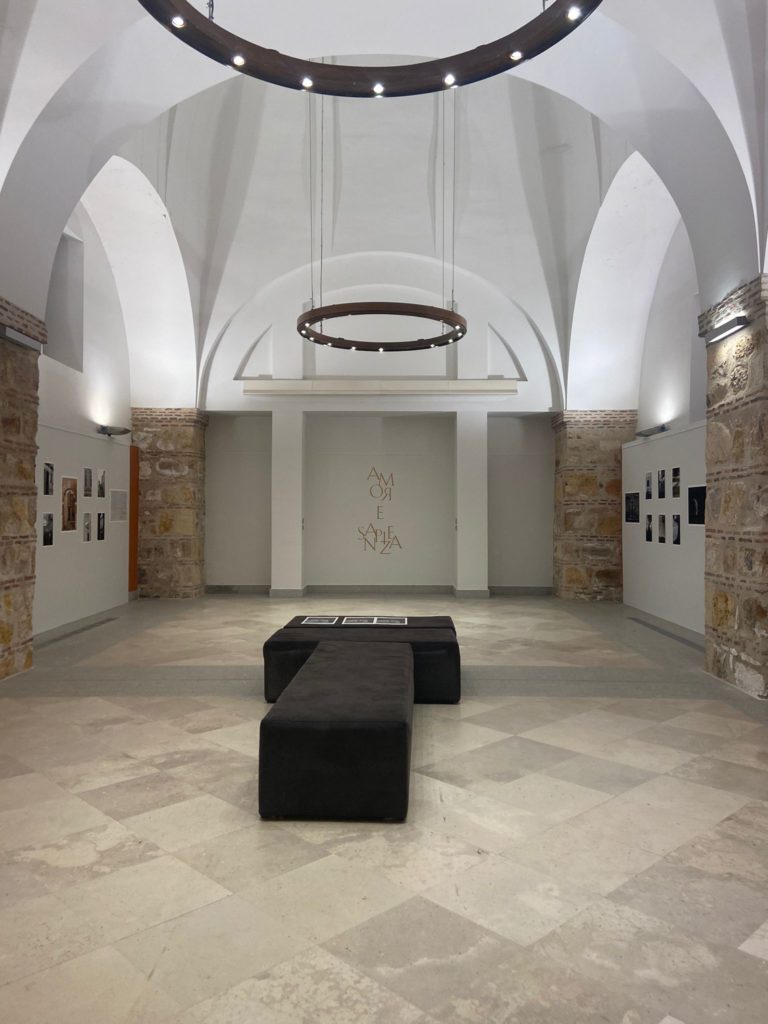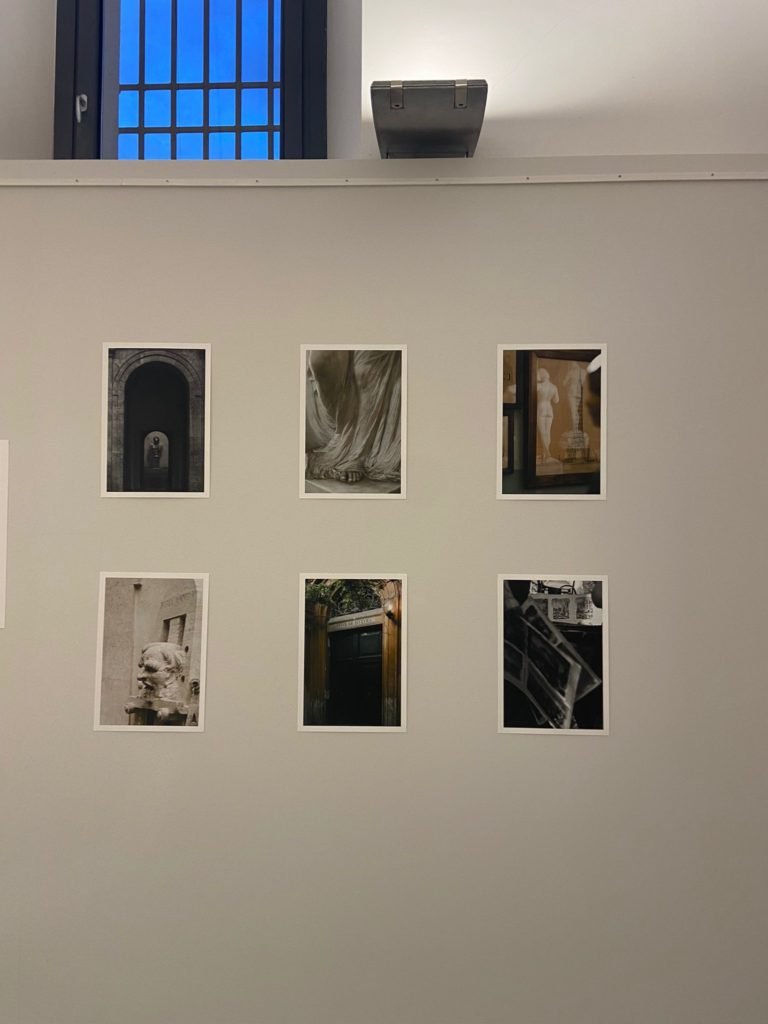Amor e Sapienza, a beautiful photography exhibit in the gallery space of the Creativity Center by Paula Rosell.
Paula is a photographer born in Madrid. Her collection is a series of photographs inspired by the eternal city named Amor e Sapienza.

Paula Rosell, since her first ever visits to Rome as a teenager, has been interested in the intricacies and personal stories of the metropolis. With her art, Paula was able to peel back the ordinary aspects and find herself immersed in the secrets and the metamorphosis of Rome.
Amor e Sapienza reaches multiple levels of an audience, and through its formation speaks in mysterious ways. While the piece clearly appears to be close to Paula’s self-exploration, the artwork enhances a variety of emotions for the audience and that is all dependent on how the viewer is experiencing it. The artwork, albeit if it’s silent, tells both individual and collective stories of the city.

To understand Amor e Sapienza better and untie art mysteries, I have interviewed Juan Carlos Redondo Antona, the director of The Creativity Center in Segovia.
Nisa: What is your [personal] thought process while curating art? Where do you start? How does it end?
Juan Carlos: First, it’s a feeling. So I normally start with a feeling I may have for an artist. It there was something that caught my attention. Then I guess I like when they have this diverse mindset, then obviously the aesthetics, and the artistic or humanistic quality of the work, and then everything else comes naturally. Because when you meet up extraordinary people, it’s very easy to get a job after those first steps.
N: How does the thought process work when you’re deciding on an exhibition? Do business decisions come more into play?
JC: You have to combine methodology with an artistic mindset. And in my case, first you have to check out the logistics. Meaning you have to understand the cost. You have to understand whether the spaces we have are adapted to what you want to accept and then coordinate and agree with the logistics side of it, then what I always do is ask the person to send me audios as many as they like telling me their stories, telling me where and when everything started; the personal feelings, the personal story, the storytelling. And that does not only give me beautiful and extraordinary insights, but you create a quality connection with the person so you pay attention to their foundations and to the personal side of the story. In the case of Paula, it was very significant and very beautiful to catch the city of Rome in her within a few minutes because she was there for several times before the date. Everything kind of changed entirely for her. And when I got deeper into her own personal story, she felt good about it. So they will tell you things that are super valuable.
N: So it’s almost like also like the therapist role of getting the artist comfortable?
JC: Absolutely. Because at the end of the day, in most cases, artists do what they do because it’s a way out to contemplate disabilities in life. Not to mention that sometimes they find or get into self-realization by means of what they do. So you have to understand that by paying attention to what they do, you will be able to enter the inner world.
N: What made you particularly interested in this exhibition? How did you come across it? Is there a story behind this collaboration?
JC: See, back in the times, I didn’t pay attention to the coincidences, but nowadays it is my assistance. I came across Paula five years ago at an IE event. She used to work for the university. And so I came across her by chance. Over the course of the next years, I came [more and more] across her work and I connected the dots. And when I approached her photography, I was like, wow. In addition, I lived in Rome. So it was just about connecting the dots, [again]. Normally, when you’re young, you don’t pay attention to coincidences. Then when you start to pay attention to that, you realize everything is absolutely connected. So it was kind of easy to get it done because the connection was already there a few years ago.
N: I had the privilege of visiting the exhibitions yesterday and there was no one, which I loved. I was alone, looking at photographs. One thing that I noticed, though, there was no framing. Is there a particular reason behind this? Does it have to do with the comment that she’s making on time? And that framing is a border? Was there a thought process on why it was exhibited the way it was?

JC: Good eye! You got it right. It was a key decision between the two of us to not frame the works as to remove ourselves from the usual ways of the exhibition. Secondly, naming the works will somehow condition your view, so we didn’t. Because, by telling you a piece is named something and that and it was made in Rome, we are conditioning your view that way. You immerse yourself in making the work.
N: What were your thoughts on the opening night? What was the main feedback you got from people?
JC:[I] actually[received a] significant amount but to be fairly honest I value [it] a lot; we were just a small group of people sharing beautiful things together. Then the feedback we received from the Instagram live we shot through. It was pretty consistent and there was a beautiful engagement between her and the students who came because in the interview we had led by another student, some nice connections happened and some pretty cool and particular questions from the audience arose. And then everything else was nice networking with snacks and drinks in the exhibition room; so it was a beautiful night. Funny thing was that we didn’t expect to have a gig; we actually happened to organize last minute with a music festival in town. So we complemented the exhibition with a gig of a solo artist from New Orleans that was just astonishing. Like, it was just the best way to close the festival.

The breathtaking exhibit Amor e Sapienza will be open till the 22nd of October, and it is definitely a must-see this month. I advise all of our students to stop by.









